GPS Stands for Global Positioning System, By using GPS anyone can always obtain the Position and time information anywhere in the world. This is possibly done when the GPS module has able to find three or more satellites. Generally, GPS receivers use 24-32 Satellites to provide data to the user.
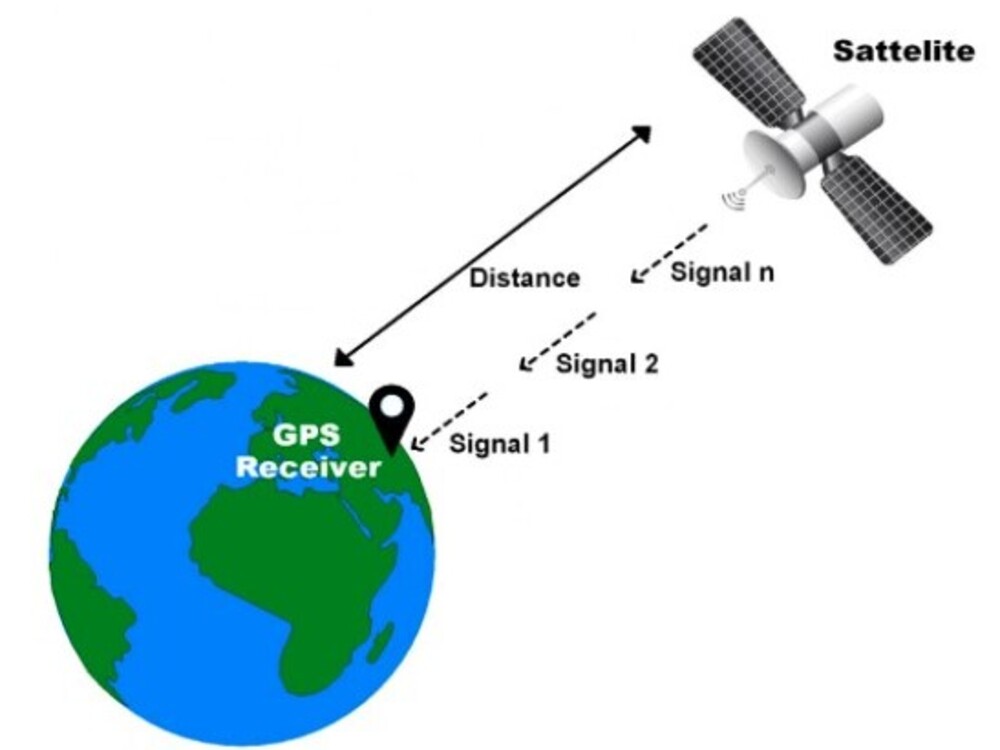
GPS Modules contain tiny processors and antennas that directly receive data sent by satellites through dedicated RF Frequencies.
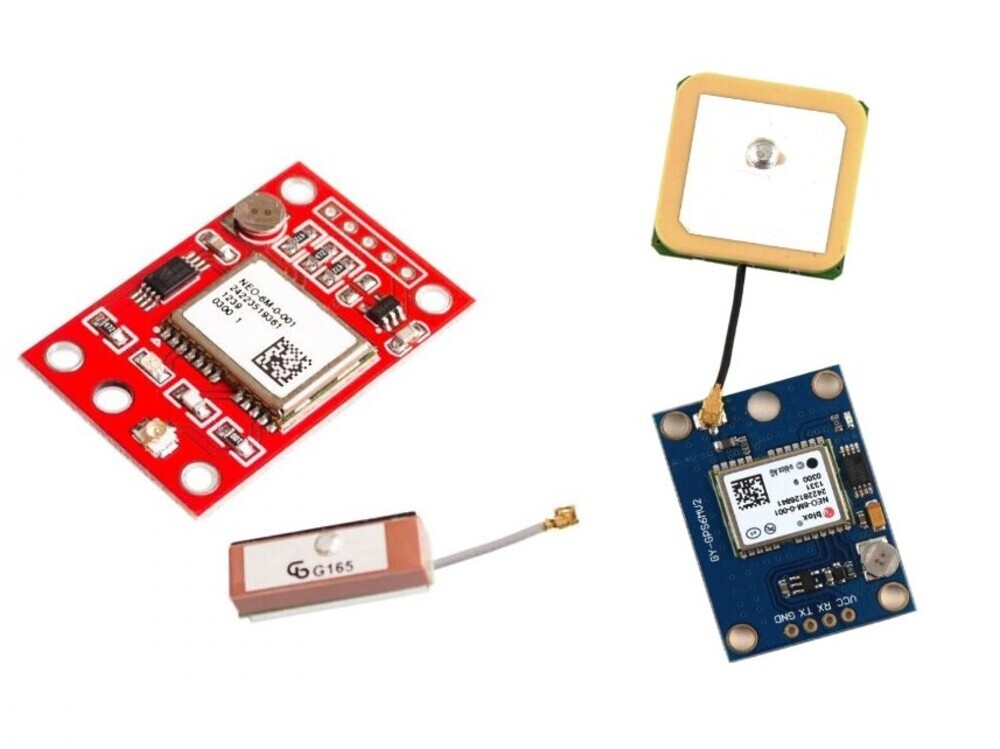
Applications of GPS Modules
Nowadays GPS Modules have a number of applications those are listed below, particularly it plays a vital role in agriculture, Enteterniment
- Agriculture: GPS modules have the ability to monitor the farmland information yield crop information etc
- Transportation: GPS mounted devices have navigation, traffic updates, Some companies use GPS Trackers to the vehicle to monitor the physical location and movement of the vehicle, and also for monitor the vehicle status like speed, security, etc
- In drones, GPS helps for navigating and assists pilots with steady-state, etc.

Why GPS Configuration is necessary?
In GPS configuration most important is getting signals from satellites this GPS has configuration is explained below.
In GPS configuration following three segments
- Space Segment(GPS Satellites): A number of Satellites revolve around the earth at 12-hour- intervals, and they are deployed on six orbits on the earth.
- Controle Segment: This segment is doing satellite monitoring
- User segment(GPS receiver): receives the signal from the satellite
Configure the GPS receiver, knowing the type of chipset used in GPS, because the chipset contains some processor responsible for user interface, some calculations, and some antenna support circuits. and GPS configuration parameters like update rate, baud rate, Sentence Selection, etc.
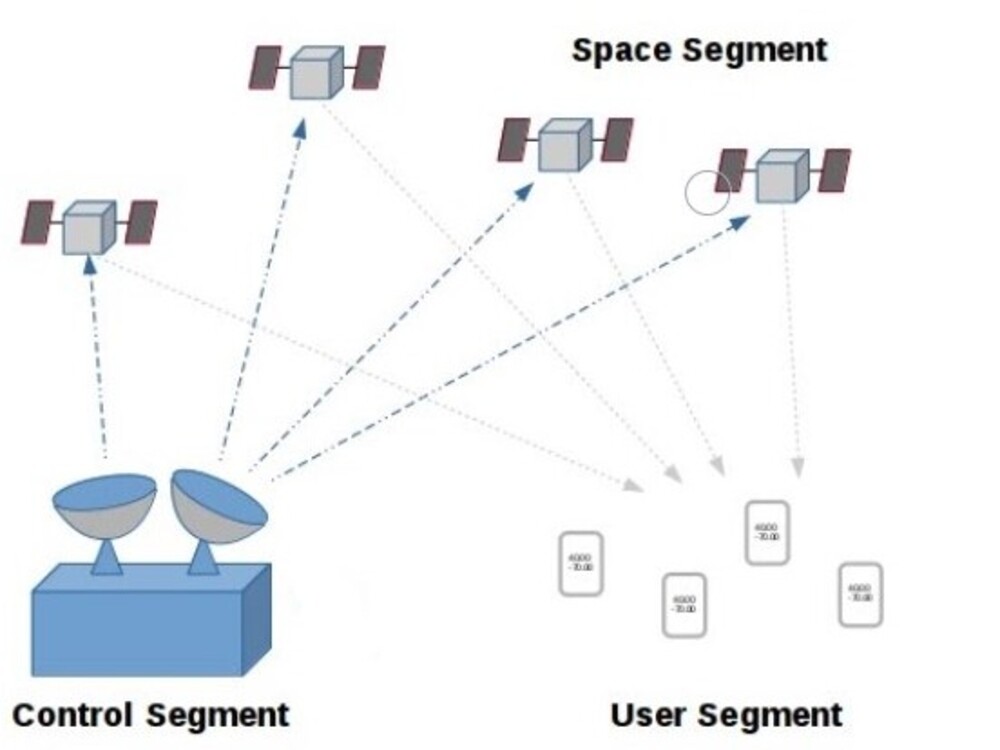
GPS Configuration Parameters
In this section, we can explain the important parameter involved in GPS configuration
- Baud Rate: GPS receivers send serial data out of a transmit pin (TX) at a specific bit rate. The most common is 9600bps for 1Hz receivers but 57600bps is becoming more common. Check the datasheet of the receiver for more information.
- Update Rate: The update rate of a GPS module is how often it calculates and reports its position. The standard for most devices is 1Hz (once per second). UAVs and other fast vehicles may require increased update rates. 5 and even 10Hz update rates are becoming available in low-cost modules. Keep in mind, that higher update rates mean there are more NMEA sentences flying out of the module.
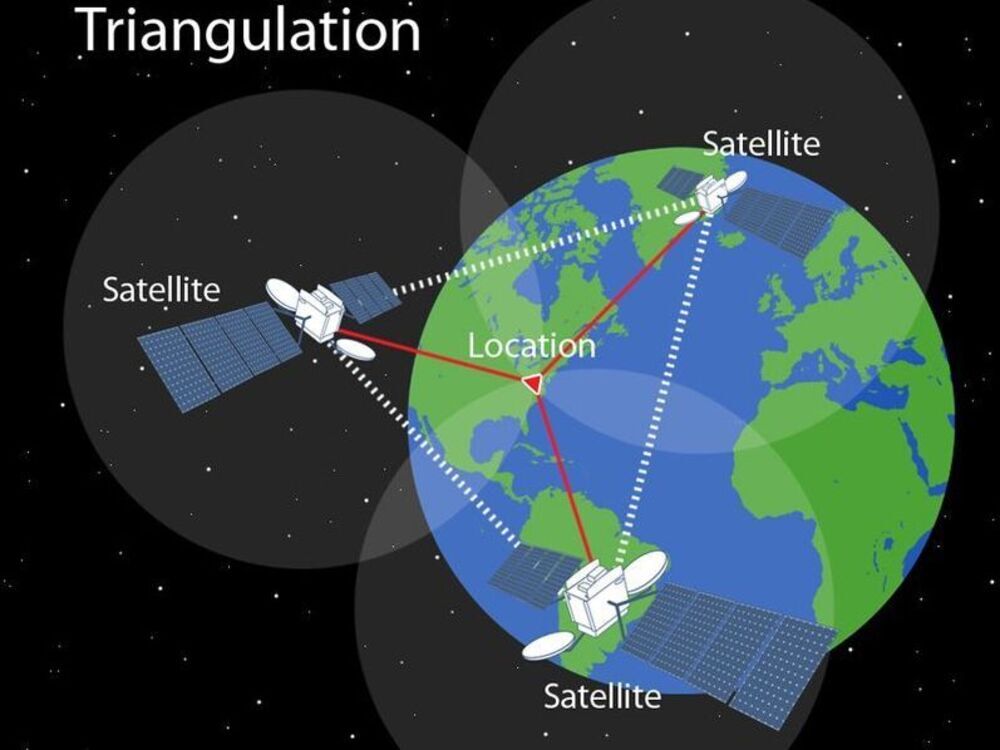
- NMEA: NMEA is the common data format for all GPS modules, this NMEA format contains all information like time, Altitude, Longitude, Position, etc.
- TTFT: TTFT(Time to first fix), is the time taken for fixing position by the module, after powering it on.For this GPS module at least 4 satellites. If this GPS module is inside or some heavy cloudy in the sky TTFT gets too long.
- PPS: PPS(Pulse Per Second), is the output on GPS modules, when this pin toggles, once a second. it will help to synchronize the system clock with the GPS clock.
How to interface NEO-6M with Arduino
In the above sections, we already know about GPS working and parameters, so we can directly move the Pinout of the module, wiring diagram, and coding, tools for the GPS module Most of the GPS modules have Serial Port, which will help to connect with microcontroller and computers. So when you connect GPS to the microcontroller connect TX and RX connection to get.
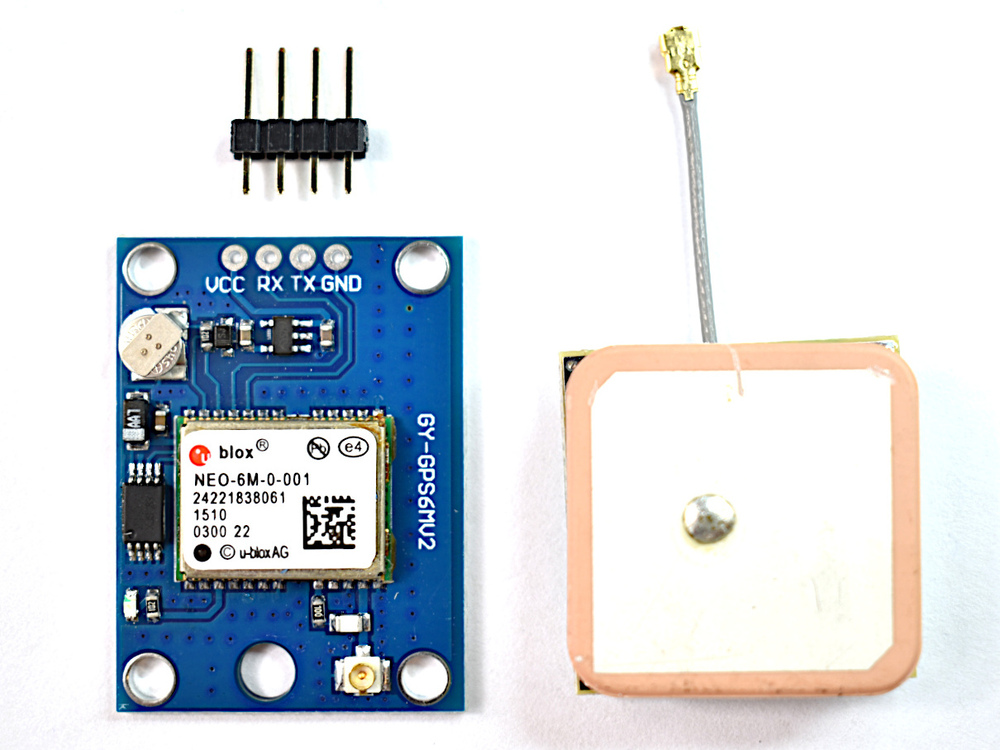
- This GPS module Support a baud rate from 4800bps to 20400bps, the default baud rate is 9600bps
- This Module has a Position fix led indicator, it indicates the status of the position fix
- It not blinking means. searching for satellite
- Blink every 1 second means position FIX found
Pinout and Wiring Diagram of NEO-6m
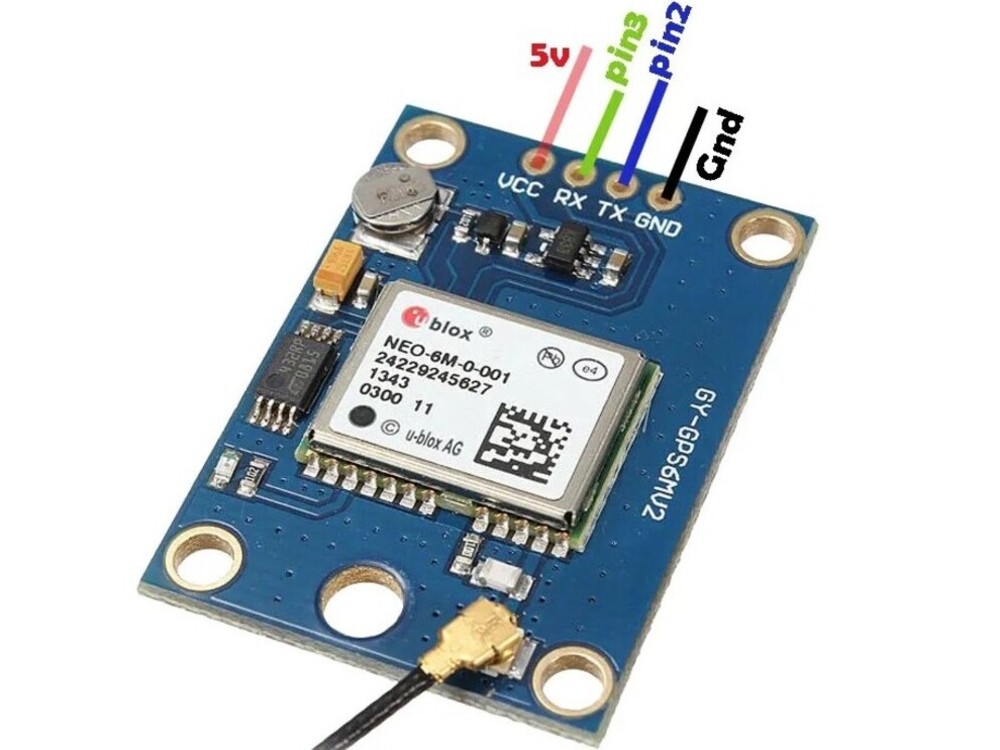
- GND is the Ground Pin and needs to be connected to the GND pin on the Arduino.
- TxD (Transmitter) pin is used for serial communication.
- RxD (Receiver) pin is used for serial communication
- VCC supplies power for the module. You can directly connect it to the 5V pin on the Arduino
Check out our website www.probots.co.in to find all the parts for your projects! We have 2000+ Electronic Modules, Sensors, and Components for all your electronics projects.

You can purchase this s NEO-6M here – Buy Now
Wiring Diagram with Arduino Code
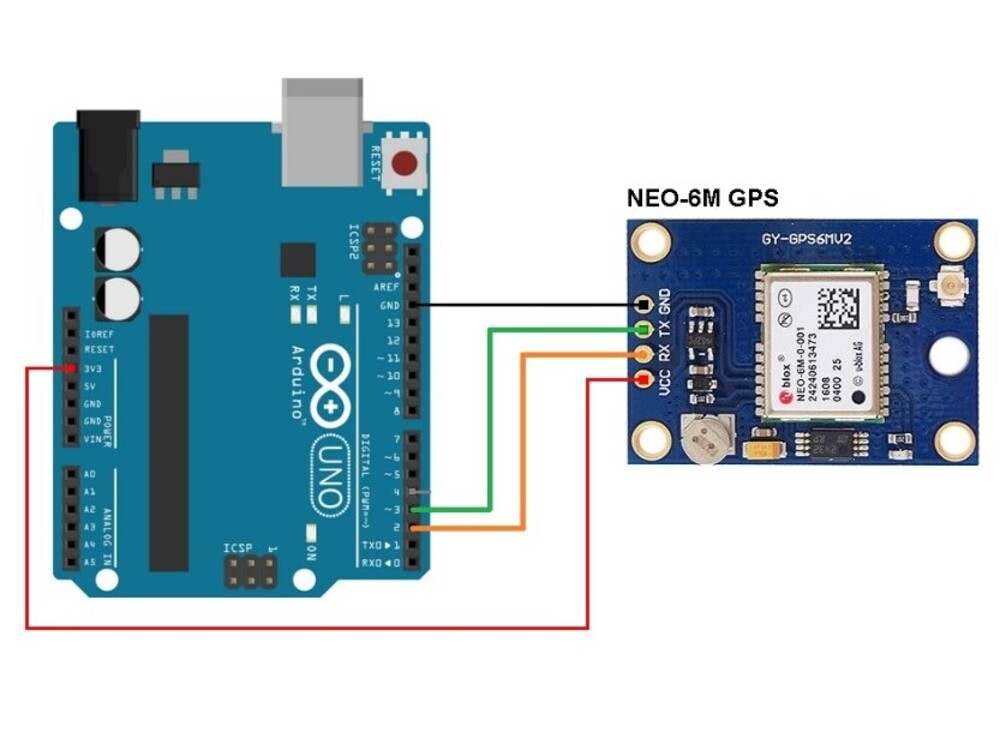
| Sr.no | GPS Pinout | Arduino Pinout |
| 1 | VCC | 5V |
| 2 | RX | 2 |
| 3 | TX | 3 |
| 4 | GND | GND |
#include
int RXPin = 2;
int TXPin = 3;
int GPSBaud = 9600; // Default baud rate
// Create a software serial port called “gpsSerial”
SoftwareSerial gpsSerial(RXPin, TXPin);
void setup()
{
Serial.begin(9600); // Start the Arduino hardware serial port at 9600 baud
// Start the software serial port at the GPS’s default baud
gpsSerial.begin(GPSBaud); // Start the software serial port at the GPS’s default baud
}
void loop()
{
while (gpsSerial.available() > 0) // Displays information when new sentence is available.
Serial.write(gpsSerial.read());
}
After uploading the code, open the serial monitor change the baud rate, and get output, That output was obtained in the NMEA format.

Components used in this project are available on our website www.probots.co.in